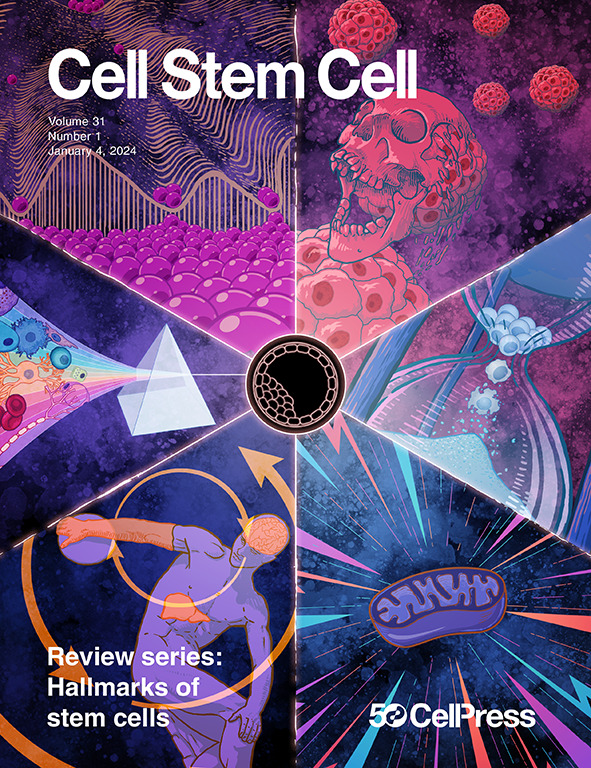建立开端:解锁先进的基于干细胞的胚胎模型
IF 20.4
1区 医学
Q1 CELL & TISSUE ENGINEERING
引用次数: 0
摘要
Silva和Hanna小组最近的两项研究优化了化学诱导和培养条件,直接从胚胎干细胞(ESCs)中获得胚胎外谱系,无需转基因,使小鼠干细胞胚胎模型(SCBEMs)可重复地推进到E8.5-E8.75阶段。本文章由计算机程序翻译,如有差异,请以英文原文为准。
Building the start: Unlocking advanced stem cell-based embryo models
Two recent studies from the Silva and Hanna groups optimized chemical induction and culture conditions to derive extraembryonic lineages directly from embryonic stem cells (ESCs) without transgenes, enabling mouse stem cell-based embryo models (SCBEMs) to reproducibly advance to the E8.5–E8.75 stage.
求助全文
通过发布文献求助,成功后即可免费获取论文全文。
去求助
来源期刊

Cell stem cell
生物-细胞生物学
CiteScore
37.10
自引率
2.50%
发文量
151
审稿时长
42 days
期刊介绍:
Cell Stem Cell is a comprehensive journal covering the entire spectrum of stem cell biology. It encompasses various topics, including embryonic stem cells, pluripotency, germline stem cells, tissue-specific stem cells, differentiation, epigenetics, genomics, cancer stem cells, stem cell niches, disease models, nuclear transfer technology, bioengineering, drug discovery, in vivo imaging, therapeutic applications, regenerative medicine, clinical insights, research policies, ethical considerations, and technical innovations. The journal welcomes studies from any model system providing insights into stem cell biology, with a focus on human stem cells. It publishes research reports of significant importance, along with review and analysis articles covering diverse aspects of stem cell research.
 求助内容:
求助内容: 应助结果提醒方式:
应助结果提醒方式:


